Topics
Category
Era
Twin City Rapid Transit Company and Electric Streetcars
Horse car and cable car systems in the Twin Cities spurred urban growth and gave residents more mobility. The coming of the electric streetcar in 1889 had an even greater impact. With cars that could travel faster and farther, the system grew to become one of the nation's finest public transportation networks before the dominance of automobiles and buses in the 1950s.
The first electric streetcars were developed in the mid-1880s. The new mode of transportation caught on. By 1902, there were 21,902 miles of street railway tracks throughout the United States, with 97 percent of all lines powered by electricity. The electric streetcar earned the nickname "trolley" for the trolley wheel that ran along the overhead wires to power the car.
When Thomas Lowry assumed control of both Minneapolis and St. Paul streetcar companies in 1886, he was reluctant to adopt electrification. The Minneapolis City Council forced Lowry's hand when it approved the construction of an experimental line by the Thomas-Houston Electric Company. The city mandated that Lowry's company purchase the line if the demonstration proved successful. Lowry agreed, and the new line entered service on Fourth Avenue South in Minneapolis on December 24, 1889.
Archbishop John Ireland encouraged Lowry to build the first electric lines in St. Paul. The St. Paul City Railway's first electrified route ran on Grand Avenue on February 22, 1890. Soon , a second line began service on Randolph Avenue.
The public quickly embraced the new technology, but there was speculation about its safety. People were afraid of sparks flying from the wheels and worried that the wires overhead would attract lightning strikes. Drivers of horse-drawn vehicles thought their horses would be electrocuted if they attempted to cross the streetcar tracks. Skeptics believed that the first snowstorm would put the electric cars out of business. The popularity of the lines grew In spite of these concerns. By 1892, the newly incorporated Twin City Rapid Transit Company (TCRT) had converted all horse car routes to electric operation.
The extensive three-year conversion required heavier, wider track, and wider streetcars. New power stations were needed, the first of which was located at the corner of Third Avenue North and Second Street in Minneapolis. The cost of conversion for the two cities totaled $6 million.
The first interurban route began operation in December 1890, following the old horse car line down University Avenue. The Como–Harriet line opened in July 1898. It ran seventeen miles, from Como Park in St Paul to Lake Harriet in Minneapolis, and cost a dime—two zones at a nickel each. In 1906, the Selby–Lake Street line began service on a route crossing the newly built Lake Street bridge over the Mississippi River. The Snelling–Minnehaha line opened in 1909. That year, TCRT bought the St. Louis Park and Robbinsdale lines, expanding operations to the suburbs.
To meet the power needs of the rapidly developing new system, TCRT leased two power stations near the dam just below St. Anthony Falls. The growth of the streetcar system gave riders convenient access to destinations from Wildwood Amusement Park in White Bear Lake to Lake Minnetonka, where it connected with a fleet of express and excursion boats.
Electric streetcars reached their heyday in the 1920s, when TCRT had more than nine hundred cars running on more than 523 miles of track. Ridership peaked in 1920. That year, the company carried a record 238 million passengers, in spite of an increase in the fare from five to six cents—the first increase in TCRT's history.
Improved roads and the growing popularity of automobiles began to cut into streetcar revenues by the late 1920s. In 1929, TCRT shut down some of its lines and raised the fare to ten cents. To cover its losses, the company purchased local bus companies and a controlling interest in Yellow Cab. Diversifying gave TCRT a monopoly on public transportation in the Twin Cities.
Encouraged by increased ridership during World War II, one hundred forty-one sleek new President's Conference Committee cars entered service between 1945 and 1949. These were short-lived. Rapidly declining ridership in the post-war years prompted new TCRT management to replace streetcars with buses. The last streetcar made a final ceremonial run in Minneapolis on June 19, 1954.
Bibliography
"City Goes Off Its Trolley—at Lunch." Minneapolis Morning Tribune, June 19, 1954.
Diers, John W., and Aaron Isaacs. Twin Cities by Trolley: The Streetcar Era in Minneapolis and St. Paul. Minneapolis: University of Minnesota Press, 2007.
Kieffer, Stephen. Transit and the Twins. Minneapolis: Twin City Rapid Transit Company, 1958.
Lind, Alan R. Twin City Rapid Transit Pictorial. Park Forest, IL: Transport History Press, 1984.
Minnesota Streetcar Museum. A Brief History of Twin Cities Transit.
http://www.trolleyride.org/History/Narrative/TC_Transit.html
Steuart, W.M. Street and Electric Railways, 1902. Washington, D.C.: Government Printing Office, 1905.
https://books.google.com/books?id=1lY4LVqjTU0C
Related Resources
Primary
Twin City Rapid Transit Company Corporate records, 1872–2001
Manuscript Collection, Minnesota Historical Society
http://www2.mnhs.org/library/findaids/00207.xml
Description: Records of the company, its subsidiaries, and successors that operated the streetcar and local bus system in the Minneapolis–St. Paul metropolitan area from 1891 until 1970.
Secondary
Lowry, Goodrich. Streetcar Man: Tom Lowry and the Twin City Rapid Transit Company. Minneapolis: Lerner Publications Company, 1979.
Web
Anderson, Matt. “Streetcars in St. Paul and Minneapolis.” Collections Up Close Podcast and Blog, Minnesota Historical Society, St. Paul, April 29, 2008.
http://discussions.mnhs.org/collections/2008/04/streetcars-in-st-paul-and-minneapolis/
Minnesota Digital Library. Minnesota Reflections.
http://reflections.mndigital.org/
Today in Science History. Charles Joseph Van Depoele.
http://todayinsci.com/V/VanDepoele_Charles/VanDepoeleCharles-Obituary%281892%29.htm
Scientific American. Frank Julian Sprague.
http://www.scientificamerican.com/article/frank-julian-sprague/
Related Images
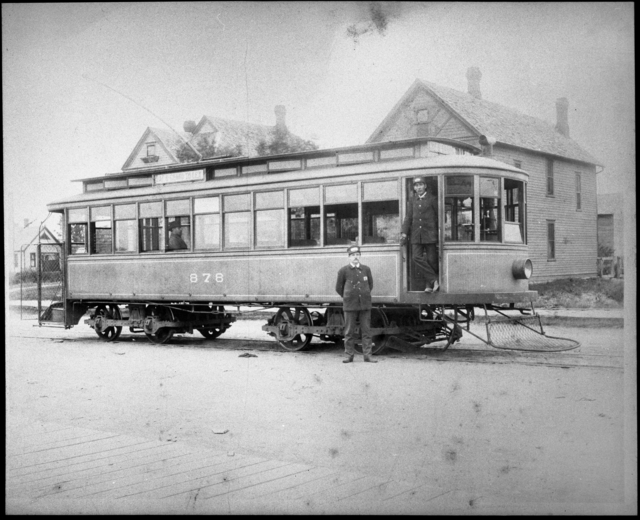
Grand Avenue streetcar
Grand Avenue streetcar, St. Paul, c.1910.
Public domain
Holding Location
More Information
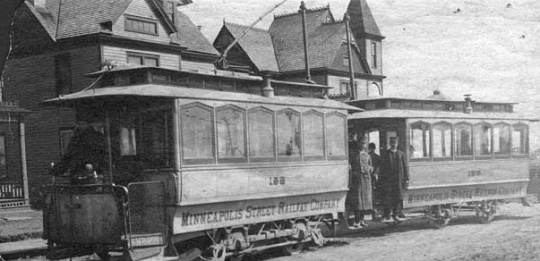
First electric street cars in Minneapolis
First electric street cars in Minneapolis, c.1889.
Public domain
Holding Location
More Information
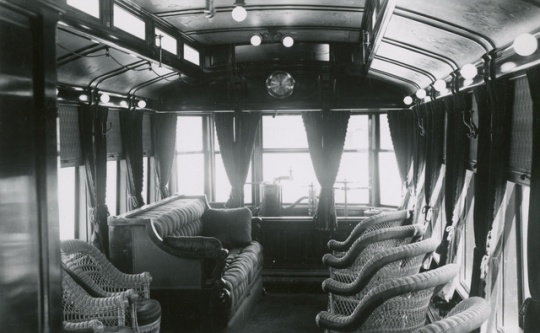
Interior of Thomas Lowry's private streetcar
Interior of Thomas Lowry's private streetcar, c.1900.
Public domain
Holding Location
More Information
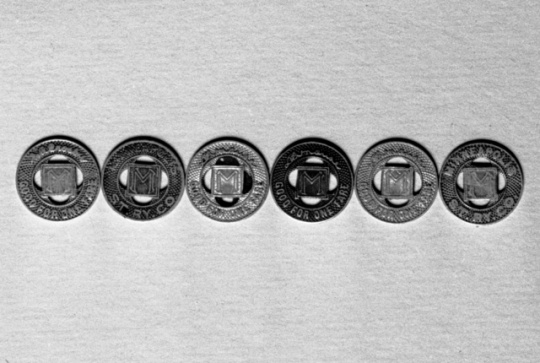
Minneapolis Street Railway streetcar tokens
Minneapolis Street Railway streetcar tokens, 1947.
Holding Location
More Information
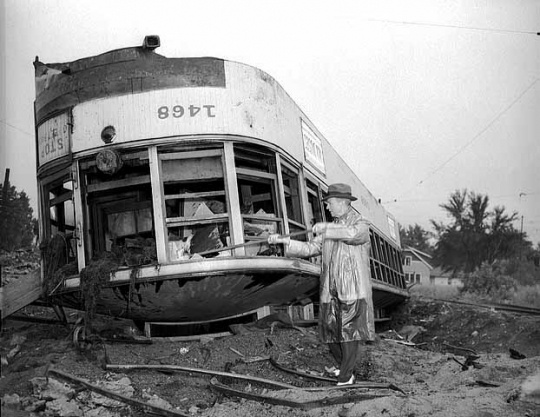
Minneapolis farewell to streetcars
Minneapolis farewell to streetcars. TCRT Chairman, Fred A. Ossanna, smashes the window of an electric streetcar following the implementation of motor buses in Minneapolis, 1954.
Holding Location
More Information
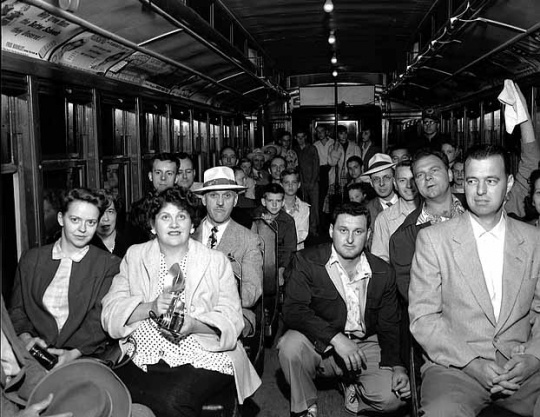
Passengers on the last Minneapolis streetcar run
Passengers on the last Minneapolis streetcar run, June 18, 1954. Photographed by St. Paul Dispatch & Pioneer Press.
Holding Location
More Information
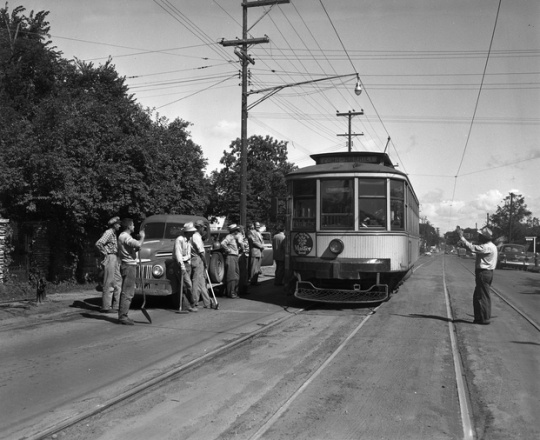
Last streetcar to run on France between Forty-Forth Street and Fifty-Forth Street
Looking north on France Avenue at Forty-Sixth Street as the last streetcar to run on France between Forty-Forth Street and Fifty-Forth Street passes the work crew that is about to tear up the track, August 10, 1952.
Holding Location
More Information
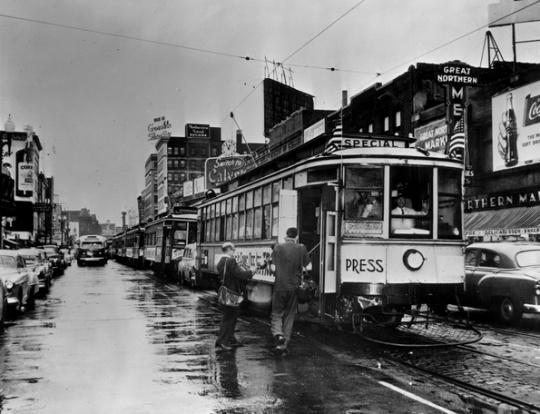
Last day of streetcar service in Minneapolis
Last day of streetcar service in Minneapolis, June 18, 1954.
Holding Location
More Information
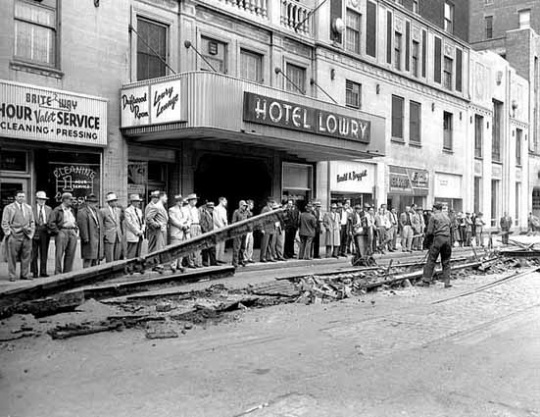
Trolley track removal
Trolley track removal, Fourth and Wabasha, St. Paul, April 12, 1955.
Holding Location
More Information
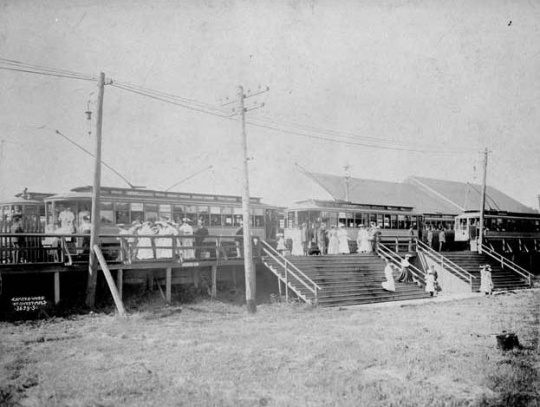
Interurban streetcar station at White Bear Lake
Interurban streetcar station (White Bear Lake), Wildwood Amusement Park, c.1915.
Public domain
Holding Location
More Information
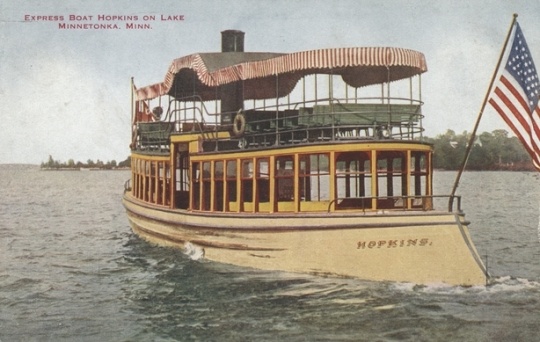
Twin City Rapid Transit Company Express boat
Twin City Rapid Transit Company Express boat Hopkins on Lake Minnetonka, c. 1908.
Public domain
Holding Location
More Information

Interior of a President's Conference Committee (PCC) streetcar
Interior of a President's Conference Committee (PCC) streetcar, September 5, 1953. Photographed by John Runk, Jr.
Holding Location
More Information
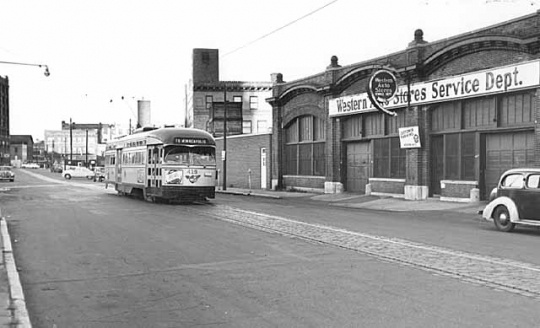
President's Conference Committee (PCC) streetcar #419
President's Conference Committee (PCC) streetcar #419, July 27, 1953. Photographed by John Runk, Jr.
Holding Location
More Information
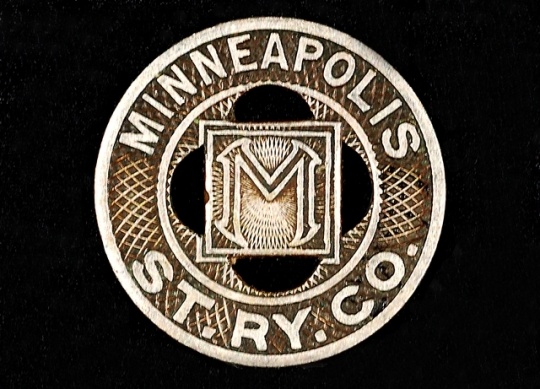
Minneapolis Street Railway Company trade token
Minneapolis Street Railway Company trade token, 1945–1949.
All rights reserved
Holding Location
More Information

Twin City Rapid Transit Company brass bell
Twin City Rapid Transit Company brass bell used on TCRT streetcar no. 1302, 1908.
All rights reserved
Holding Location
More Information

Wooden streetcar sign
Wooden streetcar sign with carved black lettering on each side, installed at the corner of Lexington and St. Clair by the St. Paul City Railway Company, c.1920.
All rights reserved
Holding Location
More Information
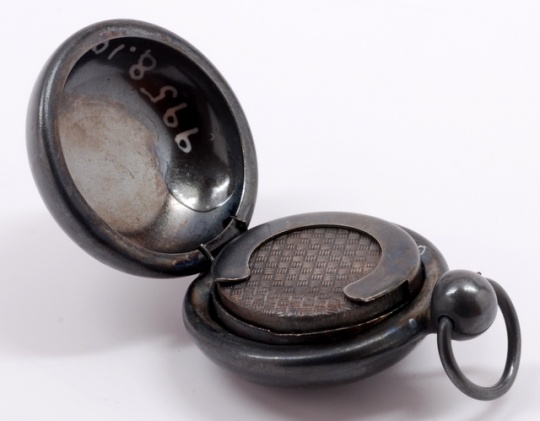
Metal streetcar token holder
Metal streetcar token holder, c.1900s.
All rights reserved
Holding Location
More Information
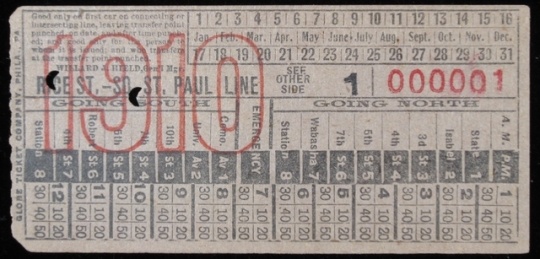
Streetcar transfer ticket
Streetcar transfer ticket, 1910.
All rights reserved
Holding Location
Related Articles
Turning Point
The successful demonstration of an electric streetcar line in the city of Minneapolis in 1889 sparks the conversion from horse cars and cable cars to an electrified system.
Chronology
1872
1873
1875
1878
1880s
1881
1887
December 24, 1889
February 22, 1890
December 1890
1891
1892
1920
1940s
June 19, 1954
Bibliography
"City Goes Off Its Trolley—at Lunch." Minneapolis Morning Tribune, June 19, 1954.
Diers, John W., and Aaron Isaacs. Twin Cities by Trolley: The Streetcar Era in Minneapolis and St. Paul. Minneapolis: University of Minnesota Press, 2007.
Kieffer, Stephen. Transit and the Twins. Minneapolis: Twin City Rapid Transit Company, 1958.
Lind, Alan R. Twin City Rapid Transit Pictorial. Park Forest, IL: Transport History Press, 1984.
Minnesota Streetcar Museum. A Brief History of Twin Cities Transit.
http://www.trolleyride.org/History/Narrative/TC_Transit.html
Steuart, W.M. Street and Electric Railways, 1902. Washington, D.C.: Government Printing Office, 1905.
https://books.google.com/books?id=1lY4LVqjTU0C
Related Resources
Primary
Twin City Rapid Transit Company Corporate records, 1872–2001
Manuscript Collection, Minnesota Historical Society
http://www2.mnhs.org/library/findaids/00207.xml
Description: Records of the company, its subsidiaries, and successors that operated the streetcar and local bus system in the Minneapolis–St. Paul metropolitan area from 1891 until 1970.
Secondary
Lowry, Goodrich. Streetcar Man: Tom Lowry and the Twin City Rapid Transit Company. Minneapolis: Lerner Publications Company, 1979.
Web
Anderson, Matt. “Streetcars in St. Paul and Minneapolis.” Collections Up Close Podcast and Blog, Minnesota Historical Society, St. Paul, April 29, 2008.
http://discussions.mnhs.org/collections/2008/04/streetcars-in-st-paul-and-minneapolis/
Minnesota Digital Library. Minnesota Reflections.
http://reflections.mndigital.org/
Today in Science History. Charles Joseph Van Depoele.
http://todayinsci.com/V/VanDepoele_Charles/VanDepoeleCharles-Obituary%281892%29.htm
Scientific American. Frank Julian Sprague.
http://www.scientificamerican.com/article/frank-julian-sprague/



















